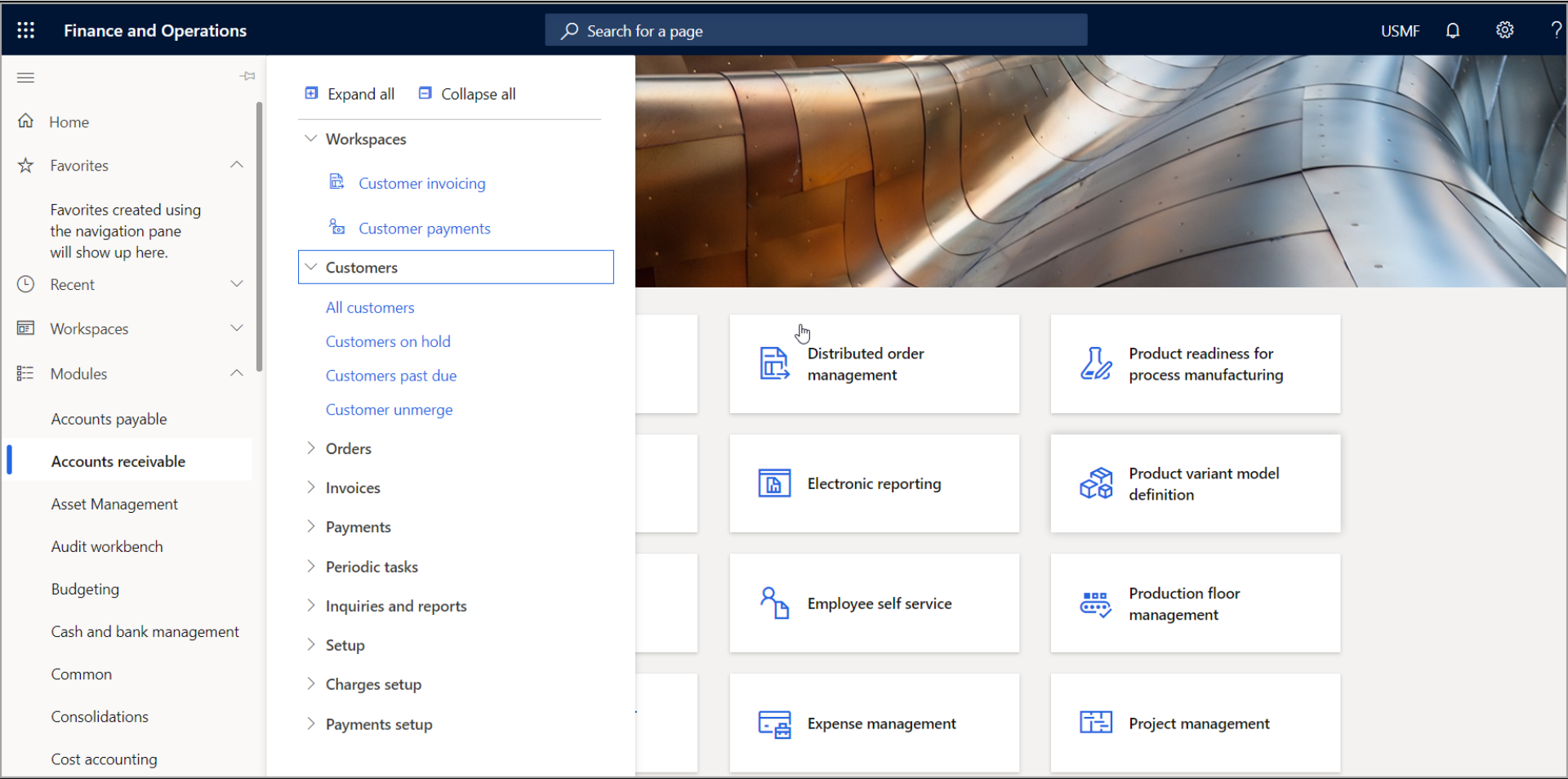UI and Navigation in D365
Table of Content:
In this section you will learn about
Dashboard
Dashboard: The dashboard is the first page that you will see in Finance and Operations apps. It contains tiles that show various information. You can return to the dashboard at any time by clicking Finance and Operations apps on the navigation bar at the top of the frame.
The dashboard consists primarily of a large section of workspace tiles.
Tiles
A tile is a rectangular button that behaves like a menu item button. It is used to navigate to, or open pages. Tiles can also display relevant data, such as counts or key performance indicators (KPIs). A tile can include images that provide you with additional visual context.
The screenshot below shows the Bank management, and Benefits tiles.
Navigation pane
The navigation pane provides access to workspaces, main menu elements, recently opened pages, and user-defined favorites. You can open the navigation pane by selecting the Show navigation pane button under the navigation bar.

The navigation pane consists of four collapsible sections.
-
Favorites - This section provides quick access to the list of pages the user has explicitly marked as a favorite. Marking a page as a favorite is accomplished by clicking the star icon next to the page in the navigation pane. This can be helpful for areas of the system that are used frequently, or, conversely, areas of the system that are not used frequently but could benefit from being easily accessible when the need arises.
-
Recent - This section is a list that is auto populated with links to the areas in the system that have been viewed most recently. This can be helpful for reference purposes, as well as easily switching back and forth between separate areas of the system.
-
Workspaces - This is the set of workspaces a user has access to.
-
Modules - This section provides the full list of modules. Clicking on a module will open the right side of the navigation pane, where you can navigate to a specific page in that module.
Workspaces
Workspaces are activity-oriented pages that are designed to increase your productivity by providing information that answers your most pressing activity-related questions. This is where you store your more frequent tasks.
Access to the various workspaces depends on the roles that users have in the organization.
To navigate to a workspace, you can click a tile on the dashboard, click a link in the navigation pane, or find the workspace using the navigation search feature.
Below is an image of the Customer payments workspace.

Workspaces contain sections of content that are relevant to the task for which the workspace is intended.
The first section will usually be a set of tiles that you can click to begin new tasks or access lists of items. The second section contains a set of relevant lists for the activity. The last section contains several links to pages that are important but not frequently used for this activity.
In between the list and links section are a few optional sections that might contain charts and graphs. One important distinction of workspaces is that they do not have a data source.
If the content requires a data source, it can be updated to include that.